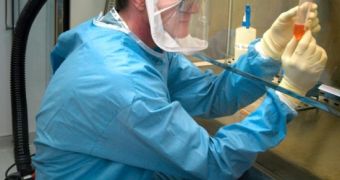Scientists in the United States and Japan managed to discover the genetic complex that is thought to be responsible for the 50 million deaths registered during the largest and deadliest pandemic in the world, the 1918 influenza pandemic. The complex, which contains three genes, allows the virus to survive and replicate inside the lungs, leading to severe pneumonia, the main cause of death in the outbreak that swept the world almost a century ago.
The research team that investigated the old strain of the virus, made up of scientists from the University of Wisconsin, in the United States, and the Universities of Kobe and Tokyo, in Japan, used ferrets as test subjects, because they develop the symptoms of the flu and the common cold in a way very similar to humans.
During the experiments, the team had the tedious task of replacing countless genes from the old strain of the virus to newer ones and waiting for it to infect the lungs. In the end, after numerous combinations, they found a compound that affected the lungs and caused lethal pneumonia. PA, PB1, and PB2 are the three genes responsible for the mutation of the flu virus into its pandemic form.
The scientists also warned that, based on their results, it was very likely that a flu pandemic would strike again soon. Nobody knows when though, so health experts caution the general public to be very attentive to their state of health. Because of the way in which HRV mutates every time a vaccine is developed, it's virtually impossible for researchers worldwide to contain it.
The main concerns now turn to the H5N1 avian flu strain, which already killed 247 of the 291 patients it infected since 2003. If the necessary mutation occurs, then this virus could easily spread globally, if you take into account the fact that it's already present in Asia, Africa, and a significant portion of Europe. If it mutates and can adapt to living in the human populations, many millions of people could die in a matter of months.

 14 DAY TRIAL //
14 DAY TRIAL //